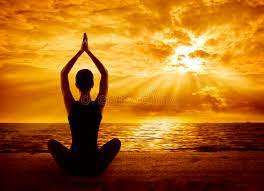“When the student is ready, the teacher appears, when the student is truly ready, the teacher disappears”
-Lao Tzu

courtesy of pexels.com
Summary:
Yoga and Pranayama’s origins can be traced back 5,000 years ago to North India but can it ease anxiety and insomnia.
We are generally not aware of how to let go of tension and as a result, it gets caught up in our body leading to physical and mental discomfort.
The ancient practice of yoga consisting of asanas, meditation and pranayama can help us achieve a more balanced state of mind and relieve stress, panic and anxiety in our lives.
Detail:
Despite the challenges posed by stress and panic attacks, there are ways through which a person can manage the symptoms and reduce anxiety. The ancient practice of yoga can help overcome anxiety and manage the symptoms of panic attacks. Additionally, yoga can also help ease stress, enhance mindfulness and reduce feelings of nervousness.
There are various symptoms associated with anxiety and panic like tightness, feelings of tension and pain sensitivity. Yoga asanas can help ease the physical discomfort that comes with anxiety and panic attacks. The practice works to lengthen, stretch and balance the muscles of the body. The asanas also assist in releasing stiffness and built-up muscle tension throughout the body. Additionally, by gradually modifying the posture of the body, asanas can also bring about a change in the mentality of a person. Yoga allows people to get to know their bodies. Therefore, if the teacher tells a student to “release the shoulder”, for example, he/she becomes aware of the posture and gradually learns to release the tension from their body. As a result, they also become less anxious and panicked in their day-to-day lives as they become aware of the tensions and how to let them go.
The age-old practice of meditation, another form of mind-body complementary medicine, can also lead to a deep state of relaxation and calm the mind. During meditation, a person focuses attention and eliminates jumbled-up thoughts that may be crowding the mind and causing stress. This results in enhanced emotional and physical well-being.
Pranayama Effect on Stress and Anxiety
Pranayama or the practice of breath regulation is one of the key components of yoga practice. Pranayama consists of breathing exercises and patterns where a person purposely inhales, exhales and holds the breath in a specific sequence. Research has shown that pranayama has a calming effect on the nervous system which can improve the stress response.
When people are tense, they breathe too rapidly. The fast breathing leads to excess oxygen in the bloodstream and a decrease in the relative amount of carbon dioxide, which in turn upsets the pH level of the blood. This can cause nausea, muscle twitching, irritability, light-headedness, anxiety and stress. However, with slow, controlled breathing, the pH level of the blood comes back to balance. This lowers the heart rate and has a calming effect on the body and mind.
Skill:
Baddha Konasana
Suggested guidance:
Sit on the floor with your legs stretched to the sides. Exhale while you bring the bottoms of your feet together
Pull the feet toward the pelvis
Drop your knees to the sides
Continue to press your heels together while you take deep breaths
Dhanurasana
Suggested guidance:
Lie face down on your mat with the arms by the sides
Keep your knees hip-width apart as you bring your heels as close to your glutes as possible
Grasp your ankles with the hands
Inhale while simultaneously lifting the thighs, heels, head, and sternum away from the floor
Pull your shoulders away from the ears and keep your shoulder blades against the back
Hold the pose for 20 to 30 seconds
Padangusthasana
Suggested guidance:
Stand on the floor with your feet 6 inches apart
Flex your quadriceps (front thigh muscles) to lift the kneecaps
Exhale and fold from your waist
Keep your back, neck, and head in a straight line
Grab your big toes with your hands
While inhaling, straighten the arms and raise the torso to release the hamstrings
While exhaling, fold back down into the forward bend. Continue this for several breaths
Nadi Shodhan Pranayama
Suggested guidance:
Sit comfortably with your legs crossed
Place your left hand on the left knee
Exhale and then use your right thumb to close the right nostril
Inhale through the left nostril and then close the left nostril with your fingers
Open the right nostril and exhale
Inhale through the right nostril and then close
Open the left nostril and exhale through the left side
Consider this as one cycle
Continue for up to 5 minutes
Always complete your practice by finishing with an exhalation on the left side
Credit:
The article is contributed by Dr.Rajeev Rajesh, Chief Yoga Officer, Jindal Naturecure Institute.
India’s Soft Power Of Ayurveda To The Healing Rescue Of The World
Importance Of Yoga-Based Meditative Modalities For The Elderly
Chair Pose (Utkatasana): How To Practice, Benefits And Precautions
Action:
Do
Difficulty:
Medium
Speed:
Medium
Other Compatible Coping Skills
How many stars would you award this coping skill?
